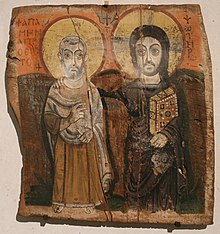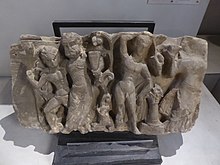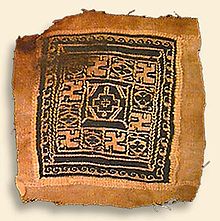
Back فن قبطي Arabic فن قبطى ARZ Копцкае мастацтва Byelorussian Art copte Catalan Koptische Kunst German Arte copto Spanish Kopti kunst Estonian Kopto artea Basque هنر قبطی Persian Art copte French




Coptic art is the Christian art of the Byzantine-Greco-Roman Egypt and of Coptic Christian Churches. Coptic art is best known for its wall-paintings, textiles, illuminated manuscripts, and metalwork, much of which survives in monasteries and churches. The artwork is often functional, as little distinction was drawn between artistry and craftsmanship, and includes tunics and tombstones as well as portraits of saints. The Coptic Museum in Coptic Cairo[1] houses some of the world's most important examples of Coptic art.[2]
- ^ Coptic museum. copticmuseum.gov.eg
- ^ Coptic Museum. lastminute.com
© MMXXIII Rich X Search. We shall prevail. All rights reserved. Rich X Search